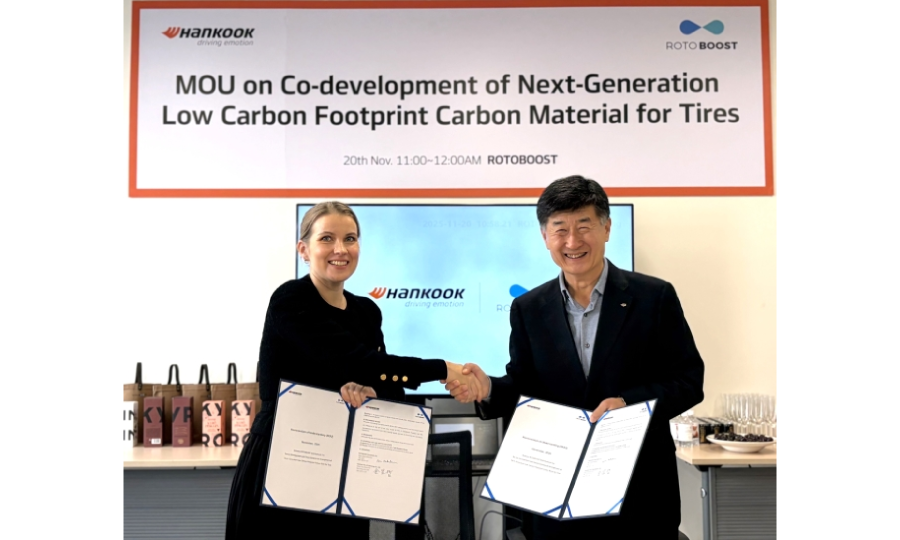
Hankook Tire has signed a memorandum of understanding with Finland-based Rotoboost to co-develop a new class of low-carbon carbon materials for tyres. Concluded on 20 November in Shanghai, the agreement focuses on carbon derived from turquoise hydrogen, produced by thermally decomposing methane to yield hydrogen and solid carbon. The companies say the work supports Hankook’s 2050 net-zero goal by addressing emissions in carbon-intensive raw materials.
Hankook and Rotoboost will optimise turquoise-hydrogen carbon for tyre compounds and validate performance in production-grade mixes. The partners aim to reduce greenhouse-gas intensity by more than 50 per cent without compromising durability or rolling resistance—an explicit target in the MoU. In practice, the approach replaces conventional fossil-based carbon black with a solid-carbon co-product from methane pyrolysis, a route that avoids process CO₂ if powered with low-carbon heat.
Turquoise hydrogen is produced via methane pyrolysis in a high-temperature reactor, yielding hydrogen and solid carbon rather than CO₂. European policy discussions now recognise methane pyrolysis among low-carbon pathways when lifecycle savings meet defined thresholds, which may help future certification and market uptake.
Hankook will develop a quantitative verification framework using Life Cycle Assessment and Environmental Product Declarations to track emissions from raw-material sourcing through to manufacturing. The company frames this as essential to evidence any claimed footprint reductions for procurement teams and ESG audits.
The MoU extends a series of projects that push lower-carbon fillers and reinforcements. In January 2025 Hankook and Solvay Silica began technical development on circular silica sourced from industrial by-products, with sample evaluation under way. In late 2024 Hankook started mass production using ISCC PLUS-certified carbon blacks derived from end-of-life tyre pyrolysis oil.
Carbon black is a high-emission input across passenger and truck tyres. If turquoise-hydrogen carbon proves equivalent in wear, grip, and rolling resistance, it could decouple compound performance from fossil-based feedstocks while creating an offtake market for the solid-carbon co-product. A joint statement from the companies said the pact aims to “strengthen [the] sustainable materials value chain.”
Hankook’s latest ESG reporting highlights mass-production progress with recycled and certified inputs, plus UK logistics upgrades designed to BREEAM “Excellent” standards. The brand has also commercialised Korea’s first chemically recycled PET tyre cord with SK Chemicals and Hyosung Advanced Materials. For readers tracking related developments, see Tyre News coverage: Hankook ESG Report Sets New Benchmarks for Circular Tyre Economy.
The partners will concentrate on material optimisation, compound validation and third-party verification. Hankook also participates in a national research programme on large-scale turquoise-hydrogen production, signalling interest in future supply at industrial scale.
Tagged with: Hankook turquoise hydrogen, methane pyrolysis carbon, low-carbon carbon black alternatives, tyre compound sustainability, ISCC PLUS materials, circular silica, recycled PET tyre cord, tyre lifecycle emissions, LCA and EPD, tyre manufacturing decarbonisation
Disclaimer: This content may include forward-looking statements. Views expressed are not verified or endorsed by Tyre News Media.
